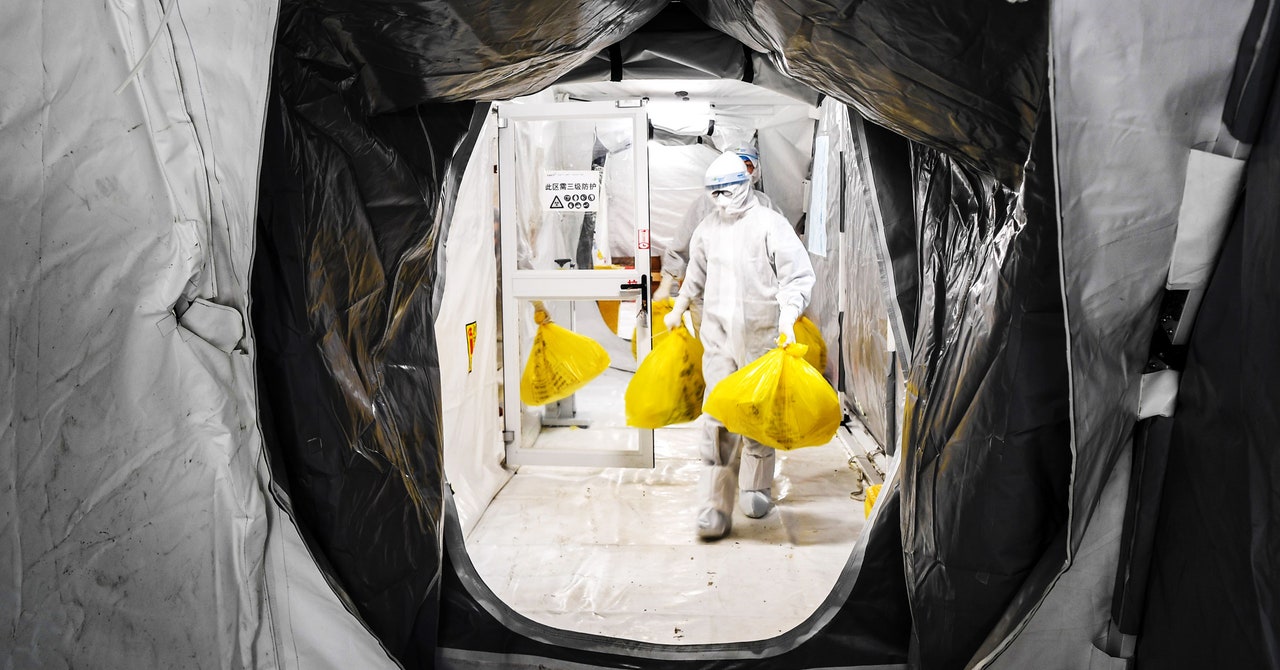
In December, researchers from Hong Kong found that two doses of Sinovac failed to produce enough antibodies to fight Omicron. Pfizer and Moderna’s vaccines, while less effective against Omicron than previous strains, still provide substantial protection—especially after three doses. And even before the variants arrived, China’s vaccines were still some way behind the West’s mRNA jabs. The numbers are stark: Sinovac is 51 percent effective in preventing symptomatic Covid infection. Pfizer is 95 percent effective. China has yet to approve Pfizer and Moderna’s shots for use on the mainland, although Shanghai-based Fosun Pharmaceuticals was given the right to distribute Pfizer’s vaccine to Hong Kong, Macau, and Taiwan.
That issue of vaccine effectiveness is compounded by the uneven spread of coverage throughout China. Much of the country’s elderly population also remains unvaccinated and vulnerable—due to the government’s decision to delay vaccinating seniors in order to prioritize those in high-risk jobs and to ensure the vaccine was safe for older people. (Chinese vaccine makers reportedly included fewer elderly people in final-stage trials than did those in the West.) Although China opened up vaccinations for seniors aged 60 and above in March, health authorities proceeded cautiously and vaccine hesitancy remains high—nearly nine months after China started offering Covid-19 vaccines to people aged 60 and above, about 50 million in this age group remain unvaccinated. For those aged 80 or older, vaccination rates range from slightly above 40 percent to below 30 percent in some areas, a National Health Commission official told state broadcaster CCTV in December.
Zhang Wenhong, an infectious disease expert who has become the country’s most trusted source on the pandemic, claimed earlier this month that the mortality rate among the elderly has remained high even after three doses. China has an estimated 4.37 ICU beds per 100,000 people, much lower than that of developed countries like the US and Germany, which have 34.7 and 29.2 ICU beds per 100,000 people, respectively.
“The initial rationale of having a zero-Covid strategy was to buy time so that a sufficient percentage of the population is vaccinated to reach herd immunity,” says Yanzhong Huang, senior global health fellow at Council on Foreign Relations, a US-based think tank. “But Chinese vaccines are not that effective in preventing infections. They cannot tolerate even a small number of infections.”
What has for so long been a point of national pride is now something of a trap. With ineffective vaccines and low protection from previous infections, a large-scale Covid outbreak could threaten vulnerable communities and overwhelm China’s health care system. To address this threat, China is adapting. Responding to the Delta variant in August, the government moved from its initial “zero-Covid” policy of literally pursuing zero cases to its current “dynamic zero-Covid” strategy, which seeks to instead swiftly crack down on outbreaks when they inevitably occur.
That shift in strategy doesn’t necessarily mean a loosening of restrictions. In the short run, the state will continue enforcing strict measures, like snap lockdowns, because unlike many countries—where lockdowns have become politically and economically unfeasible—China is both able to do so and prepared to pay the cost, according to Ben Cowling, chair of epidemiology at the University of Hong Kong. And in purely economic terms, the policy isn’t too much of a drag on China. A recent report by the Australia and New Zealand Banking Group found that the dynamic zero-Covid approach had shaved just 2.6 percent off the Chinese economy in terms of gross domestic product. “China’s been really good at cracking down and getting to zero,” says Cowling. “It’s very disruptive and involves lockdowns, mass testing, and isolation of cases, but that’s affecting a minority of people. If they can limit the spread, I’d say it’s an optimal strategy.”


